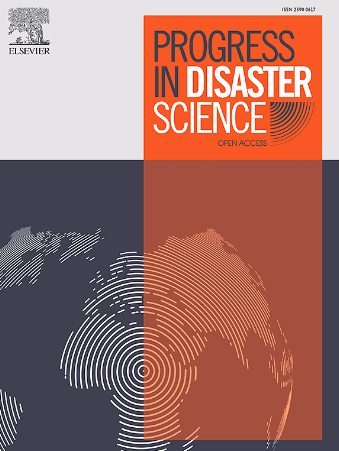Deploying a GIS-based decision model for disaster management support bases (DMSBs) siting in urban environments based on ordered weighted average (OWA) procedure
IF 3.8
Q3 ENVIRONMENTAL SCIENCES
引用次数: 0
Abstract
The establishment of Disaster Management Support Bases (DMSBs) is becoming increasingly essential due to the rapid expansion of urban populations and the geographical positioning of Iran's cities in high-risk areas, such as earthquake-prone zones. This study aimed to identify appropriate locations for DMSBs within Region 1 of the Tehran Municipality. In this process, 26 environmental factors derived from prior research on urban disaster management were identified and categorized into five groups: urban texture, transportation, proximity (compatibility), non-proximity (incompatibility), and topography/seismicity. The factors were standardized to ensure comparability by converting different computational units into uniform values. Additionally, their relative weights were determined using the Analytical Hierarchy Process (AHP) method. Subsequent to this, Ordered Weighted Averaging (OWA) modeling was employed, applying various scenarios such as AND, OR, and Weighted Linear Combination (WLC). Through this approach, order weights allowed for controlling the trade-off between factors and varying levels of risk-taking. The next phase of the study involved evaluating DMSB site suitability using zonal land suitability (ZLS) assessments. The findings identified 17 suitable zones for DMSB construction. Following detailed field inspections, five zones were selected as optimal sites spanning different districts. An analysis of the results highlighted that, in contrast to the WLC method, OWA offers a broader range of solutions by enabling adjustments to risk levels and compensation across factors. The study concludes that the decision-making rules and methodology applied in this research are valuable and adaptable for future investigations into suitable sites for DMSBs. OWA has also significantly contributed to disaster knowledge production by providing a versatile, theoretically rich, and practically applicable framework for aggregating information, supporting decision making, and advancing research across multiple scientific and engineering disciplines.

基于有序加权平均(OWA)过程,为城市环境中的灾害管理支持基地(dmsb)部署基于gis的决策模型
由于城市人口的迅速增长以及伊朗城市位于地震多发地区等高风险地区的地理位置,建立灾害管理支持基地(DMSBs)变得越来越重要。本研究旨在确定德黑兰市1区内dmsb的适当地点。在此过程中,从先前的城市灾害管理研究中得出了26个环境因素,并将其分为5类:城市结构、交通、邻近性(兼容性)、非邻近性(不兼容性)和地形/地震活动性。通过将不同的计算单位转换为统一的值,将因子标准化以确保可比性。此外,采用层次分析法(AHP)确定了它们的相对权重。在此之后,采用有序加权平均(OWA)建模,应用各种场景,如AND、OR和加权线性组合(WLC)。通过这种方法,订单权重允许控制因素和不同程度的风险承担之间的权衡。研究的下一阶段涉及使用分区土地适宜性(ZLS)评估DMSB站点的适宜性。研究结果确定了17个适合建设DMSB的区域。经过详细的实地考察,选择了五个区域作为跨越不同地区的最佳地点。对结果的分析强调,与WLC方法相比,OWA通过调整风险水平和跨因素补偿,提供了更广泛的解决方案。研究结果表明,本研究采用的决策规则和方法对未来的dmsb选址具有一定的参考价值和适应性。OWA还为灾害知识生产做出了重大贡献,它提供了一个通用的、理论丰富的、实际适用的框架,用于聚合信息、支持决策和推进跨多个科学和工程学科的研究。
本文章由计算机程序翻译,如有差异,请以英文原文为准。
求助全文
约1分钟内获得全文
求助全文
来源期刊

Progress in Disaster Science
Social Sciences-Safety Research
CiteScore
14.60
自引率
3.20%
发文量
51
审稿时长
12 weeks
期刊介绍:
Progress in Disaster Science is a Gold Open Access journal focusing on integrating research and policy in disaster research, and publishes original research papers and invited viewpoint articles on disaster risk reduction; response; emergency management and recovery.
A key part of the Journal's Publication output will see key experts invited to assess and comment on the current trends in disaster research, as well as highlight key papers.
 求助内容:
求助内容: 应助结果提醒方式:
应助结果提醒方式:


